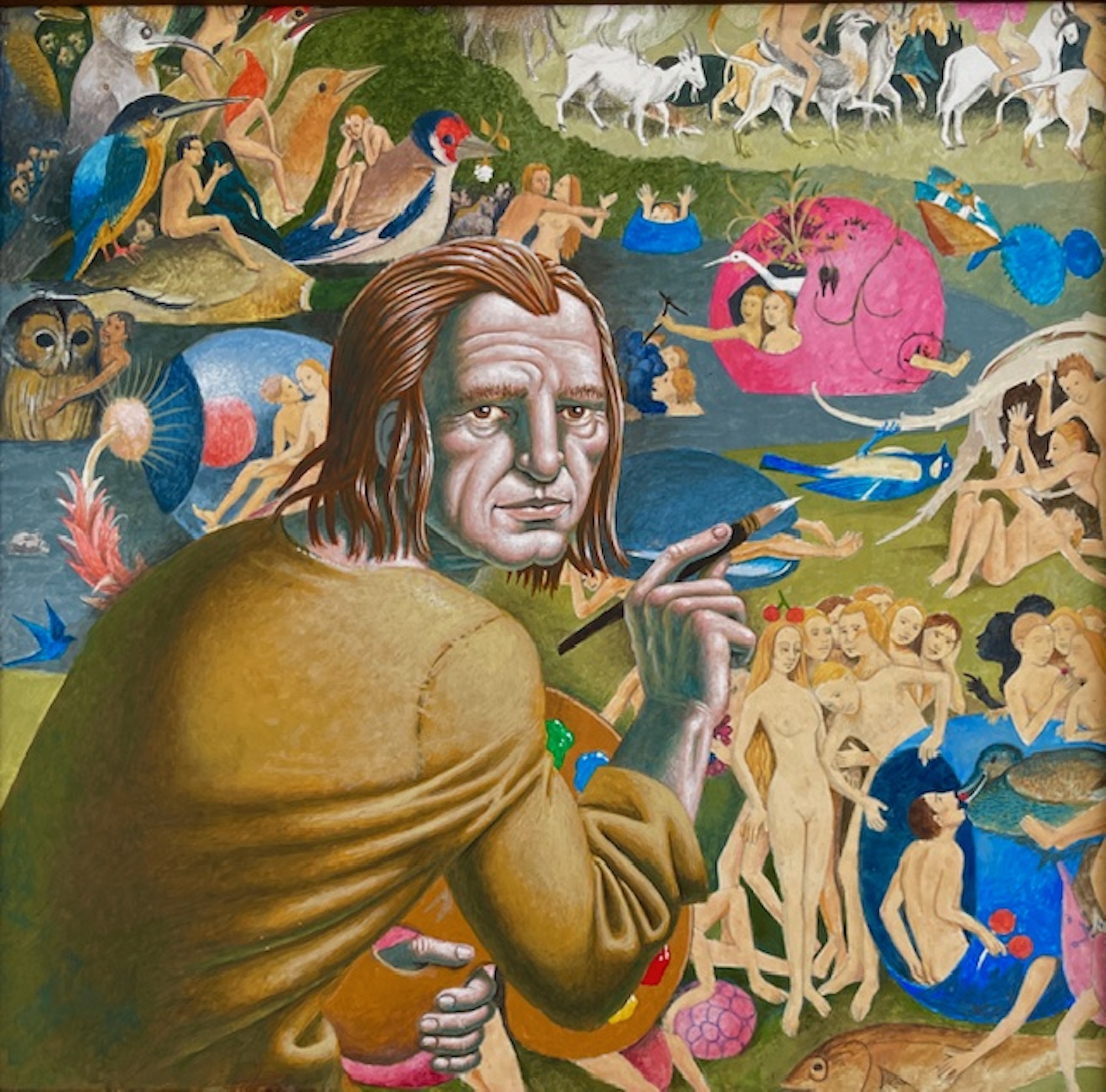The epic book depicts the Dutch painter in a labor of love (and obsession) as he creates his world-famous The Garden of Earthly Delights. The triptych famously features a central image of humans in unrestrained commune with fantastic animals and a technicolor version of nature. To the left of that image is a reflection of a still-peaceful Eden. To the right is a depiction of a despondent, squalid hellscape very much in line with Bosch’s earlier, notoriously dark work.
How Bosch came to his final vision for The Garden has been the subject of much speculation over the years. Colwell is clear in the graphic novel’s introduction that his version of events utilizes a combination of historical fact and conjecture.
“I looked at various suppositions, postulates and theories about Garden and the artist,” Colwell writes, “and decided I could boil down and twist around some of the most plausible and put them into the form of a fictional story that I hoped would provide delight to readers, as well as a glimpse of life in the 15th century.”
In the book, we see Bosch approached by two “lascivious lords” who commission a painting of “beauty and pleasure … with no shame or guilt.” Bosch quickly goes about sketching as many nude models as he can find and acquiring the aged oak panels on which he’ll paint. All the while, he works to keep his work hidden from the curious religious minds around him. Bosch, a man of faith himself, worries that The Garden might put his afterlife in jeopardy and wrestles with what the final painting should look like.


